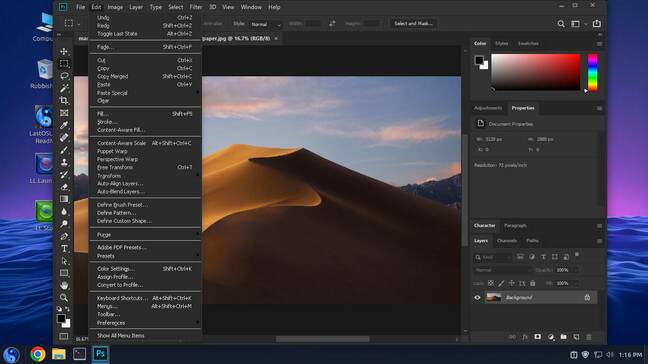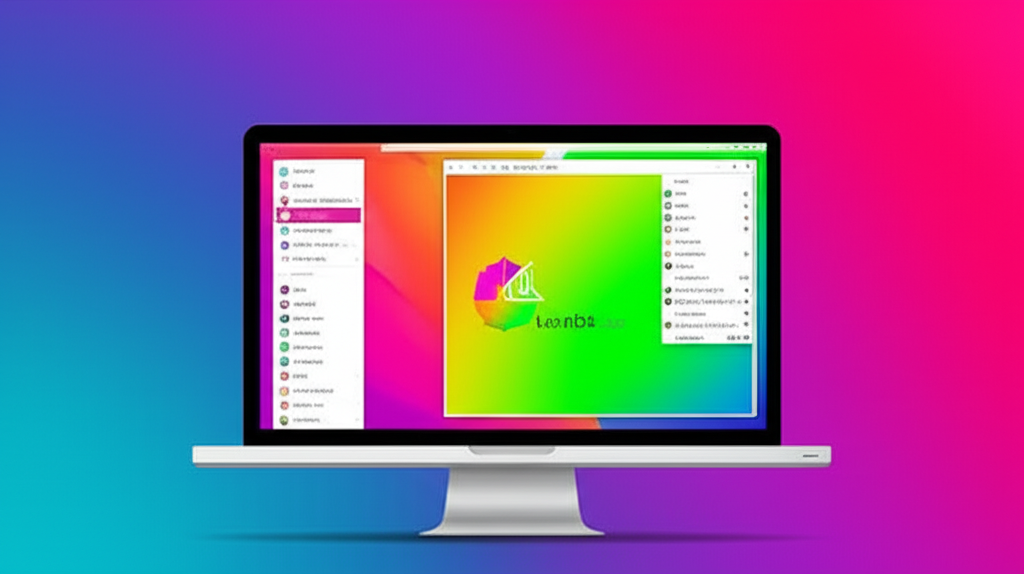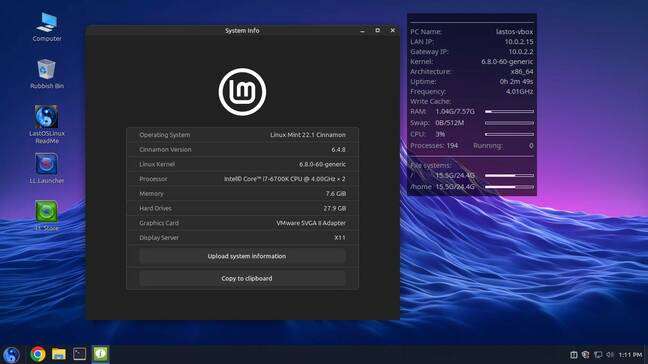LastOS Linux: A Deep Dive into the Neon-Painted Linux Mint Remix for Windows Users
As the clock ticks down towards the end of support for Windows 10, a significant number of users find themselves contemplating their next operating system. For many, upgrading to Windows 11 isn't a straightforward option, often due to hardware compatibility issues or simply a preference for exploring alternatives. This looming deadline has sparked increased interest in Linux distributions, particularly those that aim to provide a comfortable and familiar environment for users transitioning from the Windows world. The FOSS desk at The Register has taken note of this trend, observing discussions around lesser-known distros positioning themselves as potential successors for Windows 10 machines. While mainstream distributions like Ubuntu, Fedora, or Linux Mint itself are often the most recommended paths, the beauty of the Linux ecosystem lies in its diversity – there's a distribution tailored for almost every niche and preference. It's in this context that we turn our attention to one such offering: LastOS Linux.
LastOS Linux presents itself as a 'tricked-out' version of Linux Mint 22.1. Linux Mint is already a popular choice for Windows switchers, known for its user-friendly interface, stability, and out-of-the-box multimedia support. LastOS builds upon this solid foundation, adding its own layer of customization and a suite of tools specifically designed, according to its creator, to ease the transition for Windows users. But what exactly does this remix entail, and does it successfully bridge the gap for those accustomed to Microsoft's ecosystem?
What is LastOS Linux? A Customized Mint Experience
At its core, LastOS Linux is a derivative of Linux Mint 22.1, which in turn is based on Ubuntu 24.04.1. This lineage means it inherits the robustness and vast software repositories of the Ubuntu/Debian ecosystem, combined with Mint's refinements. The specific desktop environment chosen for LastOS is Cinnamon, Linux Mint's flagship desktop. Cinnamon is known for its traditional layout, featuring a panel at the bottom, a familiar Start-menu-like application launcher, and system tray icons, all elements that tend to resonate well with users migrating from Windows.
However, LastOS doesn't just adopt Cinnamon; it gives it a significant visual makeover. The default theme is characterized by a neon-hued GUI, featuring a mountain wallpaper, a distinctive blue-tinted yin-yang symbol for the Start menu icon, and the Conky system monitor prominently displayed on the desktop. While many system icons retain a Windows 10-like appearance, the overall aesthetic is a departure from Mint's typically restrained and sober look. This 'bling,' as the article puts it, is a matter of personal taste, and while it might appeal to some, others might find it a bit overwhelming or less professional than the default Mint theme.
The distribution is created by Glenn Chugg, known online as LiveFreeDead, using a tool called Penguins' Eggs. This tool is designed for remastering Ubuntu/Debian-based systems, allowing creators to build custom live environments and installers. Chugg has shared insights into his motivation and the creation process on the Penguins' Eggs blog, highlighting his goal of providing a user-friendly alternative.
Beyond the Basics: Pre-installed Software and Tools
LastOS comes with a selection of pre-installed software, building upon the standard Linux Mint offering. Like Mint, it favors Flatpak for application packaging over Snap, though no Flatpak packages are pre-installed out of the box. This gives users the flexibility to choose their preferred applications from the vast Flatpak repository.
Notable additions include WINE 9, a compatibility layer capable of running Windows applications on Linux. The inclusion of WINE pre-installed is a clear nod to its target audience, anticipating the need for users to run specific Windows software they might rely on. Google Chrome is also pre-installed, replacing Firefox, which might appeal to users already invested in the Google ecosystem.
Beyond these major inclusions, LastOS packs in numerous smaller 'quality-of-life' tools. The article mentions the Transmission BitTorrent client, a download manager, and an image viewer. It also includes optical-disk burning tools and multiple media players. While some of these additions are genuinely useful, the inclusion of multiple tools for the same task (like media playback or disk burning) might feel redundant or 'superfluous' to some users, contributing to the distribution's larger ISO size (4.6 GB compared to Mint's 2.8 GB) and installed footprint (around 13 GB).
The LL Store: A Unique Approach to Application Management
Perhaps the most distinctive feature of LastOS is its custom application store, dubbed the LL Store. Accessible via a desktop icon, the LL Store is presented as a centralized hub for installing software and games. It features a large, categorized list of applications, color-coded to indicate their type:
- ssApps (White): Silent Setup Windows Installer
- ppApps (Yellow): Permanent Portable Windows App
- ppGames (Green): Permanent Portable Windows Games
- LLApps (Blue): Linux Apps
- LLGames (Purple): Linux games
The inclusion of Windows programs directly within a Linux application store is an unusual approach. This is possible because the LL Store also has a Windows version, suggesting a broader vision for the store as a cross-platform software delivery mechanism. Some listed items are packages of the distro's own tools or its Free Mega Games Pack, although the article notes that links to these specific packages were non-functional or redirected to the LastOS forums at the time of review.
The color-coding system, while intended to clarify application types, might not be intuitive for all users and is notably unhelpful for colorblind individuals. Furthermore, the store doesn't clearly distinguish between Free and Open Source Software (FOSS), freeware, and proprietary applications, which is a significant departure from the norms of most Linux application stores.
The Photoshop Test: Running Windows Giants on Linux
One of the most intriguing aspects of the LL Store is its promise to simplify the installation of popular Windows applications. The article highlights an attempt to install Adobe Photoshop via the store. The result? A seemingly successful installation of Photoshop CC 19 (from 2018), which reportedly worked after a reboot. While the 'Help > About' box was non-functional, preventing easy version confirmation, this demonstrates WINE's capabilities and LastOS's attempt to make such installations more accessible.

Seeing a Photoshop splash screen on a Linux desktop is certainly attention-grabbing. Credit: The Register
It's crucial to note, however, that while Photoshop CC 2018 might be available as a direct download, legally using it still requires a valid Adobe Creative Cloud license. The LL Store installing a subscription-based proprietary application without explicit licensing checks or warnings is a point of concern. This contrasts with the approach taken by other distros aimed at Windows users, such as Zorin OS, which attempts to identify Windows executable files and guide users towards native Linux alternatives if available, or at least provide more context about running Windows software.

Photoshop running on LastOS via WINE, oddly displaying a macOS Mojave wallpaper. Credit: The Register
Performance, Compatibility, and Idiosyncrasies
In terms of core performance and hardware compatibility, LastOS largely mirrors its base, Linux Mint. Mint is known for being relatively lightweight and compatible with a wide range of hardware, making it suitable for older machines that might not meet Windows 11 requirements. LastOS benefits from this, offering a stable and responsive experience, particularly with the Cinnamon desktop, which is less resource-intensive than some other modern desktop environments.
However, the added layers of customization and pre-installed software do increase the system's footprint. The larger ISO and installed size mean it requires more disk space than a standard Mint installation. While WINE itself is a substantial addition, some of the other bundled applications might contribute to bloat without offering significant value to all users.
The article characterizes LastOS as an 'idiosyncratic' project, and this seems a fair assessment. The visual theme, while distinctive, is a matter of strong personal preference. The LL Store, while innovative in its attempt to simplify Windows app installation, has usability quirks like the color-coding and the lack of clear distinctions between software licenses. The spelling inconsistencies noted on the website and in the README file, along with non-functional links, suggest a project that is perhaps more a labor of love by an individual than a polished, commercially-backed distribution.
The choice of pre-installed applications also reflects this idiosyncratic nature – a plethora of media players and disk burners might be useful for some, but unnecessary for others, while potentially more common tools might be missing. This highlights a key challenge for any highly customized distribution: balancing the creator's vision with the diverse needs of a potential user base.
Community and Resources
Despite its niche status, LastOS has cultivated a community. The project has its own forums and a community subreddit where users can seek help, share experiences, and discuss the distribution. The article also mentions a review in the January 2025 issue of Linux Format magazine, indicating it has garnered some attention within the Linux media landscape.
Engaging with the community can be crucial for users encountering issues or seeking guidance, especially given the unique aspects of LastOS like the LL Store and WINE integration. However, the size and activity level of the community might not match that of larger, more mainstream distributions.
LastOS vs. The Alternatives
How does LastOS stack up against other Linux distributions often recommended for Windows users? Linux Mint itself remains a top contender due to its familiarity, stability, and large community support. Ubuntu and Fedora also offer user-friendly experiences with vast software ecosystems.
Distributions like Zorin OS are specifically designed with Windows switchers in mind, offering layouts that mimic Windows and tools to facilitate the transition, including a more refined approach to handling Windows application compatibility than LastOS's LL Store. Zorin's focus on polish and user experience makes it a strong competitor in this space.
LastOS's primary differentiator is the LL Store and its direct integration of Windows application installation via WINE. For users whose absolute priority is easily installing a specific set of Windows applications that are known to work well with WINE, LastOS might offer a more streamlined path than manually setting up WINE and its dependencies on another distribution. The successful (albeit quirky) installation of Photoshop demonstrates this potential.
However, this convenience comes with trade-offs: the idiosyncratic design, the potentially confusing application store interface, the lack of clear licensing information for proprietary software, and the inclusion of potentially redundant applications. For users who are open to finding native Linux alternatives or who are comfortable with a bit more manual configuration, a standard Linux Mint or Zorin OS installation might provide a more polished and predictable experience.
Conclusion: A Niche Offering with Unique Appeal
LastOS Linux is undoubtedly a fascinating project. It takes the solid foundation of Linux Mint and attempts to mold it into something specifically tailored for Windows users, particularly those who might be intimidated by the perceived complexity of running Windows applications on Linux. The LL Store is an ambitious feature, aiming to abstract away some of the technical hurdles associated with WINE.
The distribution's distinctive neon theme and inclusion of numerous pre-installed tools give it a unique character, though this character might not appeal to everyone. The idiosyncratic nature, from the visual design to the organization of the LL Store and minor inconsistencies, suggests it is a project driven by a specific vision rather than broad market appeal.
Is LastOS the ideal replacement for every Windows 10 user? Probably not. For many, a standard installation of Linux Mint, Ubuntu, or Zorin OS will offer a more conventional and widely supported path. However, for a specific subset of users – perhaps those who are drawn to its unique aesthetic, or more importantly, those who have a critical Windows application that is known to run well under WINE and is listed in the LL Store – LastOS could potentially be a compelling option. Its value proposition hinges heavily on the convenience offered by the LL Store for specific use cases.
Ultimately, the choice of a Linux distribution is deeply personal. LastOS provides another flavor in the rich Linux landscape, offering a highly customized experience with a focus on simplifying Windows application compatibility. Users considering it should weigh its unique features against its quirks and compare it carefully with more mainstream alternatives based on their individual needs and preferences. As the article wisely concludes, in the Linux world, 'you get to decide for yourself.' Weigh up your options, because something here may be just what you want.
Bootnote: Farewell, Linux Format
On a related note, the article mentions a review of LastOS in Linux Format magazine. Sadly, it appears that issue 329 may be the final one for the UK-based publication, according to a recent tweet. This is indeed sad news for the Linux community, marking the end of a quarter-century run in the challenging world of print media. We join The Register in saluting Linux Format for its long service.

